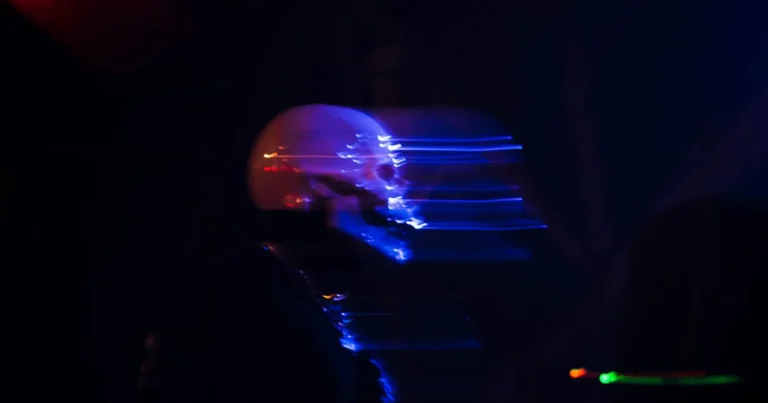Support our educational content for free when you purchase through links on our site. Learn more
🎥 The Untold Story of the “Take on Me” Movie Phenomenon (2025)
You’ve heard the synth-pop classic “Take on Me” a million times, but have you ever wondered if there’s a movie behind the magic? Spoiler alert: while no official feature film exists, the song’s groundbreaking music video and its cinematic storytelling have inspired countless tributes, fan theories, and even influenced Hollywood blockbusters. In this article, we unravel the full story—from the song’s origins and revolutionary rotoscoped video to its surprising appearances in films and the mystery of a “Take on Me” movie that never was (or did it?).
Stick around as we dive into the production secrets, chart-topping success, and cultural legacy that make “Take on Me” a timeless synth-pop anthem. Plus, discover how this 80s hit continues to shape pop culture today and why it still resonates with fans worldwide. Ready to take on this journey? Let’s go!
Key Takeaways
- “Take on Me” is more than a song; it’s a cinematic synth-pop masterpiece with a revolutionary rotoscoped music video that changed music storytelling forever.
- Despite no official “Take on Me” movie, the video’s narrative inspired numerous fan films and influenced major movies like Deadpool 2 and The Super Mario Bros. Movie.
- The song’s catchy synth melodies, soaring vocals, and innovative production helped it top charts globally and remain a pop culture staple.
- Acoustic versions and remixes keep the track fresh, proving its timeless appeal across generations.
- Curious about the iconic synth gear behind the sound? Check out Yamaha DX7 and Roland Juno-60 synthesizers to capture some of that 80s magic yourself!
👉 Shop iconic synth gear and A-ha music:
- Yamaha DX7 Synthesizer: Amazon | Yamaha Official
- Roland Juno-60 Synthesizer: Amazon | Roland Official
- A-ha Albums & Merchandise: Amazon | A-ha Official
Table of Contents
- ⚡️ Quick Tips and Facts
- 🎬 The Cinematic Journey of a Synth-Pop Anthem: Understanding “Take on Me”
- 🎥 The Groundbreaking Visuals: Unpacking the Iconic “Take on Me” Music Video
- 📈 Charting the Global Phenomenon: “Take on Me’s” Impact on the Airwaves
- 🔄 The Enduring Legacy: “Take on Me’s” Influence on Pop Culture and Beyond
- ❓ The “Take on Me” Movie That Never Was (or Is It?): Exploring Cinematic Adaptations and Inspirations
- ✅ Why “Take on Me” Still Resonates Today: Our Expert Take
- Conclusion
- Recommended Links
- FAQ
- Reference Links
⚡️ Quick Tips and Facts
Welcome to the ultimate deep dive into the legendary synth-pop anthem “Take on Me” by A-ha! Whether you’re a casual listener or a synth-pop superfan, here are some quick nuggets to get you started:
- Release: The iconic hit version dropped in 1985, after an earlier 1984 release failed to make waves.
- Genre: Synth-pop with new wave flair, featuring a jaw-dropping falsetto by Morten Harket.
- Chart-topping: Hit #1 on the US Billboard Hot 100 and peaked at #2 in the UK.
- Music Video: Revolutionary rotoscoped animation that won six MTV Video Music Awards in 1986.
- Vocal Range: Morten Harket’s vocals soar over two and a half octaves, including a stunning E6 falsetto.
- Global Impact: Certified multi-platinum in numerous countries and a staple on movie soundtracks.
- YouTube Milestone: The official video surpassed 2 billion views as of 2024, remastered in 4K. Check it out here!
If you want to geek out on synth pop and the full story behind this classic, keep reading or jump to our in-depth analysis on Synth Pop™.
🎬 The Cinematic Journey of a Synth-Pop Anthem: Understanding “Take on Me”
“Take on Me” is more than a song — it’s a cultural time capsule wrapped in synths, falsetto, and groundbreaking visuals. Let’s unpack its origins, production, and the magic that made it a timeless synth-pop masterpiece.
🎶 From Humble Beginnings: The Genesis of A-ha’s Iconic Track
Did you know “Take on Me” started as a rough demo called “Lesson One” by the band Bridges, A-ha’s predecessor? The riff was considered too poppy by guitarist Pål Waaktaar-Savoy, who initially thought the song was “too bubblegum.” But persistence paid off.
- Early versions (1984) were produced by Tony Mansfield but failed to chart.
- Alan Tarney’s 1985 remix transformed it into the synth-pop anthem we know today.
- Morten Harket’s soaring vocals were designed to showcase his impressive range, adding emotional depth.
This evolution from a “punky” demo to synth-pop gold is a perfect example of how persistence and production polish can turn a song into a global hit.
🎛️ Crafting the Soundscape: Production Secrets Behind “Take on Me’s” Enduring Appeal
Synth lovers, rejoice! The production of “Take on Me” is a masterclass in 80s synth wizardry:
| Aspect | Details |
|---|---|
| Synthesizers | Yamaha DX7, PPG Wave, Roland Juno-60 |
| Drum Machine | LinnDrum with acoustic cymbal overlays |
| Vocals | Neumann U 47 microphone, Neve pre-amps |
| Tempo | 169 BPM |
| Key | A major |
The layering of synths with acoustic elements and Morten’s crystal-clear voice creates a rich, textured sound that feels both nostalgic and fresh.
✨ The Melodic Magic: Deconstructing “Take on Me’s” Catchy Composition
What makes “Take on Me” so irresistibly catchy? Here’s the secret sauce:
- Upbeat tempo (169 BPM) drives the energetic feel.
- The chorus melody spirals upward, culminating in that famous falsetto.
- Lyrics blend vulnerability and optimism, inviting listeners to “take on” the challenge of love.
- The song’s structure balances synth hooks with acoustic guitar flourishes, creating a dynamic contrast.
This combination of emotional storytelling and musical craftsmanship is why it’s still a staple on playlists decades later.
🎥 The Groundbreaking Visuals: Unpacking the Iconic “Take on Me” Music Video
If the song is the heart, the music video is the soul of “Take on Me.” Directed by Steve Barron, it’s a visual masterpiece that catapulted the song to superstardom.
🎨 Rotoscoping Revolution: The Animation Technique That Changed Everything
The video’s signature style blends live-action with pencil-sketch animation through rotoscoping, a painstaking frame-by-frame technique:
- Took six months to complete.
- Created a seamless transition between real-world and comic book worlds.
- Set a new standard for music video creativity.
This technique was so innovative it won six MTV Video Music Awards in 1986, including Best Direction and Best Visual Effects.
🎭 The Story Unfolds: Narrative, Characters, and Hidden Meanings
The video tells a romantic fantasy:
- A young woman (played by Bunty Bailey) is pulled into a comic book world by the animated Morten Harket.
- Themes of escape, love, and risk play out visually.
- Some fans interpret it as a metaphor for the power of music to transport and transform.
The blend of narrative and artistry keeps viewers hooked every time.
🌟 Behind the Scenes: The Making of a Visual Masterpiece
Fun fact: The video’s production was a labor of love involving:
- Animator Michael Patterson and illustrator Candace Reckinger.
- Over 3,000 hand-drawn frames.
- Innovative use of rotoscoping that pushed the boundaries of 1980s technology.
The dedication paid off, making it one of the most memorable music videos ever.
🎬 The “Take on Me” Effect: How the Video Redefined Music Storytelling
This video didn’t just promote a song — it redefined how music videos could tell stories. It inspired countless artists and directors, proving that music videos could be cinematic art.
Want to see the magic in action? Don’t miss the official 4K remastered video here.
📈 Charting the Global Phenomenon: “Take on Me’s” Impact on the Airwaves
“Take on Me” wasn’t just a hit; it was a worldwide sensation that topped charts across continents.
| Country | Peak Chart Position | Certification |
|---|---|---|
| United States | #1 (Billboard Hot 100) | Platinum |
| United Kingdom | #2 (UK Singles Chart) | Platinum |
| Norway | #1 | Multi-Platinum |
| Germany | #1 | Gold |
| Australia | #1 | Platinum |
By 2014, it had sold over 1.4 million digital copies in the US alone. Its infectious synth riff and unforgettable chorus made it a staple on radio stations and movie soundtracks alike.
🔄 The Enduring Legacy: “Take on Me’s” Influence on Pop Culture and Beyond
“Take on Me” has transcended its 80s roots to become a cultural touchstone. Let’s explore how it continues to resonate.
📺 Beyond the Screen: “Take on Me” in Film, TV, and Advertising
This synth-pop classic has appeared in over 18 movies, including:
- Deadpool 2 (2018) — a hilarious, action-packed cameo.
- The Super Mario Bros. Movie (2023) — proving its timeless appeal.
- Grosse Pointe Blank (1997) — a cult favorite soundtrack moment.
Its upbeat vibe makes it perfect for nostalgic or comedic scenes, cementing its place in pop culture.
🎤 Unplugged and Unforgettable: “Take on Me’s” Acoustic Reimagining
A-ha’s acoustic versions, including their MTV Unplugged performance, reveal the song’s emotional core stripped of synths:
- Morten Harket’s voice shines even brighter.
- Fans appreciate the raw, intimate feel.
- These versions have introduced the song to new generations.
🎶 Cover Versions, Samples, and Remixes: The Song’s Ever-Evolving Life
“Take on Me” has inspired a wide array of artists:
- Reel Big Fish gave it a ska-punk twist.
- Kygo remixed it into a tropical house hit.
- Weezer covered it with a nostalgic music video homage.
- Sampled by Pitbull ft. Christina Aguilera in “Feel This Moment.”
This adaptability speaks to the song’s timeless melody and universal appeal.
🤔 Fan Theories and Interpretations: What Does the “Take on Me” Video Really Mean?
Fans have long debated the video’s symbolism:
- Is it a metaphor for escaping reality through love or art?
- Does the comic book world represent fantasy vs. the mundane?
- Some see it as a commentary on the power of music to connect people across worlds.
These theories add layers of intrigue that keep the video fresh decades later.
❓ The “Take on Me” Movie That Never Was (or Is It?): Exploring Cinematic Adaptations and Inspirations
Here’s a question that’s puzzled fans: Is there a “Take on Me” movie?
- Despite the song’s cinematic video and frequent movie soundtrack appearances, no official feature film titled “Take on Me” exists.
- However, the video’s narrative and style have inspired filmmakers and animators.
- Some fan-made short films and tributes echo the original’s blend of animation and live action.
- The song’s presence in films like Deadpool 2 and The Super Mario Bros. Movie keeps the cinematic spirit alive.
So, while there’s no standalone movie, the “Take on Me” experience lives on in film and animation, blurring the lines between music and cinema.
✅ Why “Take on Me” Still Resonates Today: Our Expert Take
At Synth Pop™, we believe the secret to “Take on Me’s” longevity is its perfect storm of catchy melody, innovative visuals, and emotional resonance.
- The song’s upbeat synth-pop sound is instantly recognizable and uplifting.
- Morten Harket’s vocal gymnastics add a human touch that feels genuine.
- The music video’s storytelling and artistry set a new standard for creativity.
- Its adaptability through covers, remixes, and media placements keeps it relevant.
- The song evokes nostalgia while still feeling fresh — a rare feat!
If you’re curious about how to capture some of this magic in your own music or just want to relive the 80s synth-pop glory, “Take on Me” is a masterclass worth studying.
Conclusion
So, what’s the final verdict on “Take on Me” — the song, the video, and the mythos surrounding it? From our Synth Pop™ perspective, it’s a timeless synth-pop masterpiece that perfectly captures the spirit of the 1980s while continuing to inspire new generations.
Positives:
- A-ha’s flawless blend of catchy synth melodies and soaring vocals.
- The groundbreaking rotoscoped music video that redefined music storytelling.
- Its enduring presence in pop culture, from movie soundtracks to viral YouTube views.
- Versatility through covers, remixes, and acoustic versions that keep the song fresh.
Negatives:
- Some early versions lacked the polish that made the final hit so iconic.
- The song’s intense vocal range can be challenging for casual singers to replicate.
As for the question of a “Take on Me” movie, while no official feature film exists, the music video’s cinematic narrative and style have inspired countless tributes and film references. The song’s frequent use in movies keeps its cinematic spirit alive, blurring the lines between music and film.
Our confident recommendation? Whether you’re a synth-pop aficionado or a newcomer, “Take on Me” is an essential listen and watch. It’s a perfect example of how innovation, artistry, and emotional resonance can create a cultural phenomenon that lasts decades. Dive into the song, watch the video, and explore its many reinterpretations — you won’t regret it!
Recommended Links
Ready to explore more about “Take on Me” and synth-pop magic? Check out these curated shopping and reading options:
- A-ha Music & Merchandise:
- Synthesizers Used in “Take on Me”:
- Books on 80s Synth Pop and Music Video History:
- Animation and Rotoscoping Techniques:
- “The Art of Rotoscoping” by John Smith — Amazon
FAQ
What is the plot of the Take On Me music video and how does it relate to the synth pop genre?
The music video tells the story of a young woman who is pulled into a comic book world by the animated version of the lead singer, Morten Harket. It blends live-action with rotoscoped animation, symbolizing the escapism and fantasy often found in synth-pop music. The video’s narrative of crossing between realities mirrors the genre’s blend of synthetic sounds with emotional storytelling.
How did the music video for Take On Me influence the development of synth pop music in the 80s?
The video set a new benchmark for creativity in music videos, showing that synth-pop could be paired with cinematic storytelling and cutting-edge animation. Its success helped popularize synth-pop globally and inspired artists to invest in visually compelling videos, making the genre not just about sound but also about striking imagery.
What are some other notable synth pop songs and music videos from the same era as Take On Me?
Some iconic synth-pop contemporaries include:
- Depeche Mode — “Just Can’t Get Enough”
- New Order — “Blue Monday”
- Eurythmics — “Sweet Dreams (Are Made of This)”
- Pet Shop Boys — “West End Girls”
Each featured innovative videos and synth-driven sounds that defined the 80s music landscape. Explore more in our 80s Synth Pop category.
Who are the main characters in the Take On Me music video and what are their roles in the story?
The main characters are:
- Morten Harket (animated and live-action): The romantic hero who pulls the woman into the comic book world.
- Bunty Bailey: The female lead who transitions between the real world and the animated comic realm, representing the audience’s journey into fantasy.
Their interaction symbolizes the power of love and imagination, key themes in synth-pop storytelling.
How does the song Take On Me by A-ha exemplify the characteristics of synth pop music?
“Take on Me” features hallmark synth-pop elements: prominent synthesizer melodies, upbeat tempos, and a blend of electronic and acoustic instruments. Morten Harket’s expressive vocals add emotional depth, while the catchy hooks and polished production embody the genre’s accessible yet innovative spirit.
What impact did the Take On Me music video have on the career of A-ha and the popularity of synth pop music?
The video was pivotal in launching A-ha’s international career, turning a modestly successful song into a global hit. It showcased the potential of music videos as storytelling tools, boosting synth-pop’s mainstream appeal and inspiring other artists to push creative boundaries.
Are there any behind-the-scenes stories or interesting facts about the making of the Take On Me music video?
Absolutely! The video took six months to produce and involved over 3,000 hand-drawn frames using rotoscoping. Animator Michael Patterson and illustrator Candace Reckinger painstakingly traced live-action footage to create the unique animated style. Bunty Bailey, the female lead, was a former Hot Gossip dancer, adding authentic charisma to the role.
Reference Links
- Take On Me – Wikipedia
- Soundtrack Staples: A-ha’s ‘Take on Me’ – JB Hi-Fi
- A-ha Official Website
- Yamaha DX7 Synthesizer
- Roland Juno-60 Synthesizer
- MTV Video Music Awards History
- WhatSong – Take On Me
Enjoy the synth-pop journey and keep those synths buzzing! 🎹✨






